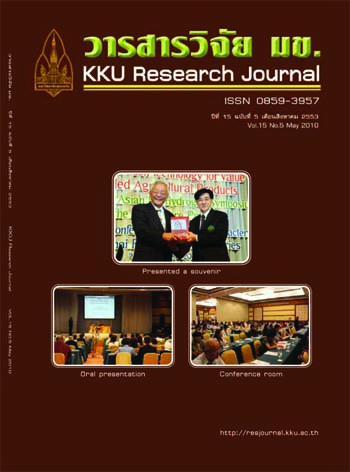Construction of a vector containing a formaldehyde-hyperresistance gene as a selective marker
Main Article Content
Abstract
The genetically modified Saccharomyces cerevisiae strains in a laboratory level normally use antibiotic substance or amino acid analog as a selective marker which are very expensive. In this research, construction of a vector containing a selective marker gene that used cheaper substance was investigated. From the study of the tolerance DNA damaging agents such as formaldehyde, it was found that a hyperresistance gene SFA (Hyperresistance to formaldehyde) was responsible for a tolerance of formaldehyde. Thus, the SFA gene from S. cerevisiae was used as a selective marker in this research. S. cerevisiae strain TISTR 5596 was chosen as a source of SFA gene since it was able to grow on 4 mM formaldehyde comparing to other strains. After amplification of the SFA gene by PCR, the PCR product was 1,160 bp long, corresponding to the length of the gene from NCBI database (gene accession No. X68020). The PCR product of the SFA gene was ligated into a plasmid pGBDU-C3 via Xhol/EcoRI site by which the gene was overexpressed under the ADH1 promoter. The plasmid containing the SFA gene was prepared from bacterial cells and further transformed into S. cerevisiae TISTR 5596. The obtained yeast transformants showed enhanced tolerance to formaldehyde concentration up to 5.5 mM; however, the untransformed yeast cells could not survive. From this study, it was demonstrated that the selection of transformed yeast cells was more convenient using SFA gene as a selective marker


